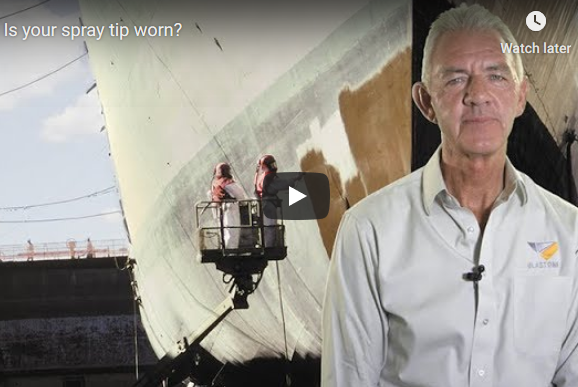Understanding Differential Pressure
A basic understanding of differential pressure is valuable in diagnosing the problems that befall a pressure release pot. Differential pressure comes in two forms; positive and negative. Each form delivers telltale “symptoms” which helps in troubleshooting and fixing the problem.
Differential Pressure is not the norm, but rather the result of a problem with the pot. It’s therefore important to understand how a properly pressurized (balanced) blast pot works – to understand what happens when the pressure becomes imbalanced.
Normative Balanced Pressure
A properly balanced blast pot maintains equal pressure in both the vessel and the push line. Gravity feeds the abrasive (like an hour glass) from the pot into the pressure stream which carries both pressure and abrasive to the nozzle. This pressure stream is dependent upon and fed directly by the push line pressure.
Positive differential pressure
If the pot’s internal pressure is greater than the push line’s pressure, it’s called positive differential pressure. This positive pressure forces abrasive into the lower metering valve which effectively is like sandblasting the valve. Positive differential pressure wears out the metering valve and the problematic “symptom” of this imbalanced system is that blasters experience a consistent stream of too much abrasive. This is because the pressure imbalance is force-feeding abrasive into the line as opposed to the hour-glass analogy.
What is the root cause of differential pressure? Typically positive differential pressure is not do to increased pressure in the vessel – but rather decreased pressure in the push line. A leak in the push line hose or valve is most likely the root cause and is where trouble-shooting should begin.
Negative differential pressure
If the pot’s internal pressure is LOWER than the push line pressure, it’s called negative differential pressure. A greater push line pressure creates an updraft and lifts the abrasive as it tries to drop (gravity style) into the pressure stream. This lifting delays the delivery of the abrasive to both the pressure stream and nozzle. Eventually the accumulation of abrasive swirling in the valve will gain in density (weight) and overcome the upward pressure – dropping en masse into the pressure stream and out toward the nozzle.
The problematic symptom caused by negative differential pressure is the experience of sporadic delivery of abrasive; it’s there, then it’s not. It’s there and then it’s not.
Again, this imbalance is not caused by the push line gaining pressure, but rather by the vessel losing pressure. The root problem is typically a leak in the blowdown hose, pop-up valve, or handway. Trouble-shooting should begin there.
Review
Positive differential pressure
Results in: Down pressure
Indicators: Way too much abrasive coming through blast stream / Premature valve wear
Probable Causes: Hose leaks or valve problems in Push Line
Negative differential pressure
Results in: Upward pressure / Up draft
Indicators: Sporadic delivery of abrasive through nozzle
Probable Causes: Leak in blowdown hose, pop-up valve, or handway
We want to know what questions, challenges, and problems you’re facing, either with blasting or painting, that we may be able to solve.
If you find our insights helpful, please subscribe and share our channel.
 My Account
My Account





